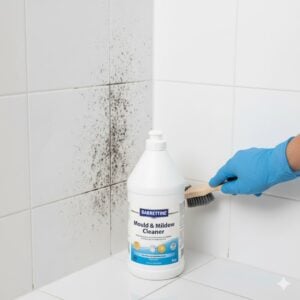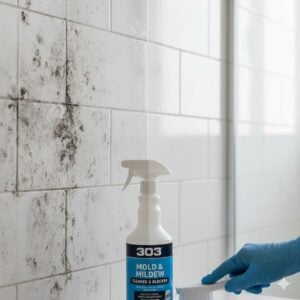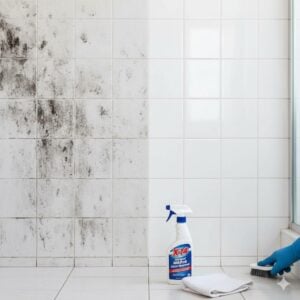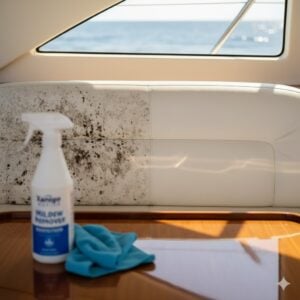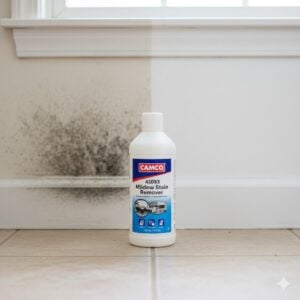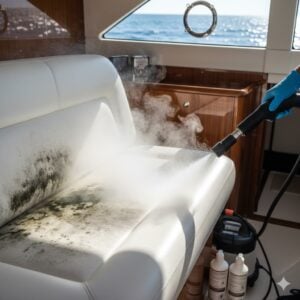In Dubai, dealing with the aftermath of a death, especially one involving blood, requires a highly specialized approach. This task, known as ‘Dead blood cleanup Dubai’, is not just a matter of conventional cleaning but a critical service that demands utmost professionalism and sensitivity. The presence of blood, often a consequence of tragic circumstances like unattended deaths or accidents, poses not only a biological hazard but also an emotional burden. It’s essential that this delicate process be handled with care, respect, and efficiency. This article will explore the six essential practices for effectively and compassionately conducting dead blood cleanup Dubai, ensuring the space is safely restored for those affected.
[lwptoc]
Table of Contents
Toggle1. Rapid Response and Assessment
The first and perhaps most crucial aspect of dead blood cleanup Dubai is a rapid response and thorough assessment. When faced with a situation involving blood, time is of the essence. Quick response not only helps in mitigating the risks associated with bloodborne pathogens but also plays a critical role in easing the emotional distress of those affected.
Upon arrival at the scene, professionals engage in a meticulous assessment process. This initial evaluation is vital to understand the extent of blood contamination. The assessment involves examining the area to determine how far the blood has spread, which can vary greatly depending on the circumstances of the death. For instance, in cases of violent incidents or accidents, blood splatters can be found on walls, ceilings, and even hidden nooks, making the cleanup process more complex.
The assessment also includes identifying the types of surfaces affected. Different materials – from carpets and upholstery to hardwood floors and tiles – react differently to blood, requiring tailored cleaning approaches. In addition, assessing the potential damage to property helps in planning the restoration process post-cleanup.
Furthermore, in scenarios like unattended deaths, where decomposition may be a factor, additional challenges arise. Decomposition can intensify the contamination and necessitates a more thorough cleaning approach. This is where the knowledge and expertise in handling unattended death cleanups, as highlighted in 7 Key Aspects of Unattended Death Cleanups, become crucial.
Safety is paramount during the assessment phase. The professionals must equip themselves with appropriate personal protective equipment (PPE), including gloves, masks, and protective suits, to safeguard against any potential health risks. The use of PPE is essential not just for the safety of the cleanup crew but also to prevent any cross-contamination.
This initial phase of rapid response and assessment sets the foundation for the entire cleanup process. It allows professionals to formulate a strategic plan that addresses all aspects of blood cleanup – from the removal of biological hazards to the restoration of the affected area. A thorough and swift assessment ensures that the cleanup process is not only effective but also carried out with the utmost respect and sensitivity to the situation’s emotional aspects.
2. Utilization of Specialized Equipment and Techniques
The second essential practice in dead blood cleanup Dubai involves the utilization of specialized equipment and advanced cleaning techniques. This step is crucial due to the hazardous nature of blood, which can contain pathogens and pose serious health risks. The goal is to ensure that the area is thoroughly cleaned, sanitized, and safe for habitation.
Specialized equipment used in these scenarios typically includes industrial-grade steam cleaners, HEPA filter vacuum cleaners, and ultraviolet light devices. Steam cleaners are particularly effective in removing blood from various surfaces, as the heat helps in breaking down blood and bodily fluids, making them easier to clean. HEPA vacuum cleaners are employed to capture and remove microscopic particles, ensuring that no contaminants are left in the air. Ultraviolet light devices are sometimes used for detecting invisible traces of blood, ensuring that no area is overlooked during the cleaning process.
In addition to the equipment, the use of appropriate cleaning agents is fundamental. These include hospital-grade disinfectants and enzymatic cleaners specifically designed to break down biological materials like blood. The choice of cleaning agents is critical, as they need to be effective against a broad spectrum of pathogens while also being safe for use on various surfaces.
The cleaning process often involves several stages, starting with the removal of any solid waste and followed by the application of cleaning and disinfecting agents. For surfaces that have absorbed blood, such as carpets or upholstery, a more in-depth cleaning approach is necessary. This might involve shampooing or deep cleaning to ensure that all traces of blood are removed.
Safety protocols are rigorously followed during the cleanup process. The team is equipped with personal protective equipment (PPE) such as gloves, protective suits, and face masks to prevent direct contact with hazardous materials. Additionally, the crew is trained to handle potentially traumatic scenes with professionalism and discretion, an essential aspect given the emotional weight of these situations.
In summary, the utilization of specialized equipment and techniques in dead blood cleanup is vital to address the complexities and risks associated with bloodborne pathogens. This approach not only ensures the thorough cleaning and sanitization of the affected areas but also safeguards the health and safety of both the cleanup crew and the occupants of the property. By adopting these advanced methods, professionals in Dubai can effectively manage the challenges of blood cleanup while maintaining the highest standards of safety and care.
3. Ensuring Health and Safety Compliance
Ensuring health and safety compliance is a critical practice in dead blood cleanup Dubai. This step is vital for protecting both the cleanup crew and anyone who enters the space afterward. Compliance involves adhering to established health regulations and safety protocols to manage the risks associated with biohazardous materials like blood.
Table: Health and Safety Compliance Measures in Dead Blood Cleanup
| Compliance Measure | Description | Importance |
|---|---|---|
| Personal Protective Equipment (PPE) | Use of gloves, masks, gowns, and eye protection. | Protects the cleanup crew from direct exposure to bloodborne pathogens and hazardous materials. |
| Proper Disposal of Biohazardous Waste | Safe disposal of contaminated materials according to regulations. | Prevents environmental contamination and secondary exposure to biohazards. |
| Use of EPA-Registered Disinfectants | Application of effective disinfectants for sanitization. | Ensures elimination of pathogens to safeguard public health. |
| Regular Training and Certification | Continuous education of the cleanup crew on biohazard management. | Enhances the effectiveness and safety of the cleanup process. |
| Documentation and Record-Keeping | Keeping detailed records of the cleanup procedure. | Provides accountability and evidence of compliance with health regulations. |
Statistical Insight into Health and Safety Compliance:
- According to the Centers for Disease Control and Prevention (CDC), proper use of PPE reduces the risk of occupational exposure to bloodborne pathogens.
- The Environmental Protection Agency (EPA) emphasizes that registered disinfectants, when used correctly, are effective against a wide range of pathogens, including those potentially present in blood.
The use of appropriate Personal Protective Equipment (PPE) is crucial for ensuring the safety of the cleanup crew. PPE includes gloves, protective suits, masks, and eye protection, which act as barriers against hazardous materials. This protective gear is essential not only for preventing direct contact with blood and other bodily fluids but also for minimizing the risk of inhaling airborne pathogens.
Proper disposal of biohazardous waste is another key aspect of compliance. Contaminated materials such as cleaning rags, PPE, and other waste must be disposed of in designated biohazard bags and containers. These materials are then handled and treated according to local regulations to prevent environmental contamination and the spread of diseases.
Using EPA-registered disinfectants is essential for effectively sanitizing the affected area. These disinfectants are specifically formulated to kill a broad spectrum of pathogens and are crucial for ensuring the space is safe for habitation post-cleanup.
Regular training and certification for the cleanup crew are important for maintaining high standards of safety and compliance. Continuous education on the latest biohazard management techniques and safety protocols ensures that the team is well-equipped to handle the complexities of dead blood cleanup.
Finally, maintaining documentation and record-keeping of the cleanup process is vital for compliance. Detailed records provide transparency and serve as evidence that the cleanup was conducted according to health and safety regulations.
4. Thorough Sanitization and Disinfection
Thorough sanitization and disinfection constitute a critical practice in the process of dead blood cleanup Dubai. This step is vital to ensure that the area is not just visibly clean but also hygienically safe, eliminating any potential health risks associated with bloodborne pathogens.
The process begins with a meticulous cleaning, targeting all surfaces that have come into contact with blood. This includes floors, walls, furniture, and any other affected items. Given the potential of blood to seep into porous materials, it’s crucial to address every nook and cranny where blood may have penetrated. The cleaning agents used are selected for their effectiveness against a broad spectrum of pathogens, and their application is thorough to ensure that no area is left untreated.
Once the initial cleaning is complete, the focus shifts to disinfection. Disinfecting the area involves the use of EPA-registered chemicals that are proven to kill viruses, bacteria, and other microorganisms that can be present in blood. These disinfectants are carefully applied according to the manufacturer’s instructions, which often include allowing a specified dwell time to ensure maximum efficacy. This step is crucial as it helps to eliminate any lingering pathogens, reducing the risk of infection or disease transmission.
In addition to the use of chemicals, UV light sanitization can also be employed as an extra measure, particularly in areas where blood spills were extensive. UV light is known for its ability to destroy bacteria and viruses, and its use can further enhance the sanitization process.
Safety during the sanitization and disinfection process is paramount. The cleanup crew must wear appropriate personal protective equipment (PPE) at all times to avoid exposure to harmful chemicals and pathogens. Moreover, the area should be adequately ventilated to prevent the buildup of fumes from disinfectants, ensuring a safe environment for both the cleanup team and the eventual occupants of the space.
The thorough sanitization and disinfection step is not only about achieving a high level of cleanliness but also about providing peace of mind. It reassures those who return to the space that it is safe and free from health hazards. By adhering to these rigorous standards of sanitization, professionals in Dubai ensure that the aftermath of a death is managed with the utmost care and attention to public health.
5. Dealing with Emotional and Psychological Impacts
Addressing the emotional and psychological impacts is an essential aspect of dead blood cleanup Dubai. This facet of the cleanup process acknowledges the profound emotional distress that can accompany such incidents, not only for the families and friends of the deceased but also for the cleanup crew who are exposed to these traumatic scenes.
The emotional toll on families dealing with the loss of a loved one can be overwhelming, especially in scenarios involving sudden or violent deaths. The presence of blood can exacerbate the sense of trauma and grief. Professional cleanup teams are trained to approach these situations with a high degree of empathy and sensitivity. They understand the importance of not just cleaning the space, but also of providing support and compassion to those affected. This involves communicating with the bereaved in a manner that is respectful and considerate, offering reassurance about the cleanup process, and being attentive to their emotional needs.
For the cleanup crew, repeated exposure to traumatic scenes can lead to emotional and psychological strain. It’s important that these professionals have access to psychological support and resources to help them cope with the challenging nature of their work. Regular debriefings, counseling sessions, and peer support can be instrumental in helping them process their experiences and maintain their mental well-being.
Moreover, cleanup services often extend beyond the physical cleanup to include helping families with practical matters such as dealing with personal belongings of the deceased. This can involve sorting, packing, and sometimes disposing of items, which should be done with utmost respect and consideration for the sentimental value these items may hold.
The cleanup process also includes ensuring that the area is restored to a state that minimizes reminders of the incident, which can aid in the emotional healing process. A space that has been cleaned and restored can provide a more comforting environment for those grieving, helping them to move forward.
6. Restoration and Follow-up
The final stage in dead blood cleanup Dubai involves the restoration of the affected property and a thoughtful follow-up with the families or property owners. This step is essential not only for returning the physical space to its original condition but also for providing emotional closure and ongoing support to those affected by the tragedy.
Restoration after a cleanup operation goes beyond basic cleaning. It often involves repairing or replacing damaged furnishings, flooring, or other structural elements. This part of the process is crucial as it helps in eradicating visual reminders of the incident, which can be distressing for the bereaved. The goal is to restore the space to a state that feels safe and welcoming, helping those affected to begin the process of moving forward. The restoration work is done with attention to detail and sensitivity, recognizing that the space holds memories and personal significance to the family.
Once the physical restoration is complete, professional cleanup teams in Dubai typically engage in follow-up activities. This step is important for ensuring that the cleanup services have met the expectations and needs of those affected. Follow-up visits or calls can provide an opportunity for families to express any concerns or additional needs they might have. It also allows the cleanup service to address any areas that may require further attention, ensuring complete satisfaction with the work done.
Moreover, follow-up interactions are an opportunity for the cleanup teams to provide emotional support. The process of recovery from a traumatic event like an unexpected death can be lengthy and challenging. By offering resources for counseling or grief support, or simply lending a listening ear, the cleanup professionals can play a crucial role in the emotional healing process.
In some cases, the cleanup team may also offer guidance or assistance with other practical matters that arise after a death, such as sorting and storing personal belongings, or dealing with estate matters. This holistic approach to aftercare is part of the compassionate service ethos.
Why Choose Bio On for Dead blood cleanup Dubai?
Choosing Bio-On for dead blood cleanup Dubai means entrusting this critical task to a team that excels in both technical expertise and compassionate service. We understand that dealing with the aftermath of a death is an emotionally taxing experience, and our approach is centered on handling each situation with utmost sensitivity and respect. Our professionals are equipped with the latest tools and techniques to ensure thorough and effective cleaning, adhering to the highest standards of health and safety. We also prioritize the emotional well-being of those affected, offering support and understanding throughout the cleanup process. At Bio-On, our commitment goes beyond mere cleanup; we strive to provide a service that respects the dignity of the deceased and offers solace to the bereaved, making us a trusted choice in these challenging times.
Conclusion
In conclusion, dead blood cleanup Dubai is a multifaceted task that requires meticulous attention to detail, adherence to strict health and safety protocols, and a profound sense of empathy and respect for those affected. The practices outlined in this article highlight the essential steps necessary to ensure that such cleanups are conducted safely, effectively, and compassionately. From rapid response and comprehensive assessment to specialized cleaning techniques, ensuring compliance, and addressing emotional impacts, each aspect plays a crucial role in managing the aftermath of such incidents. Ultimately, these practices not only restore physical spaces but also contribute significantly to the emotional healing of those affected by loss.








